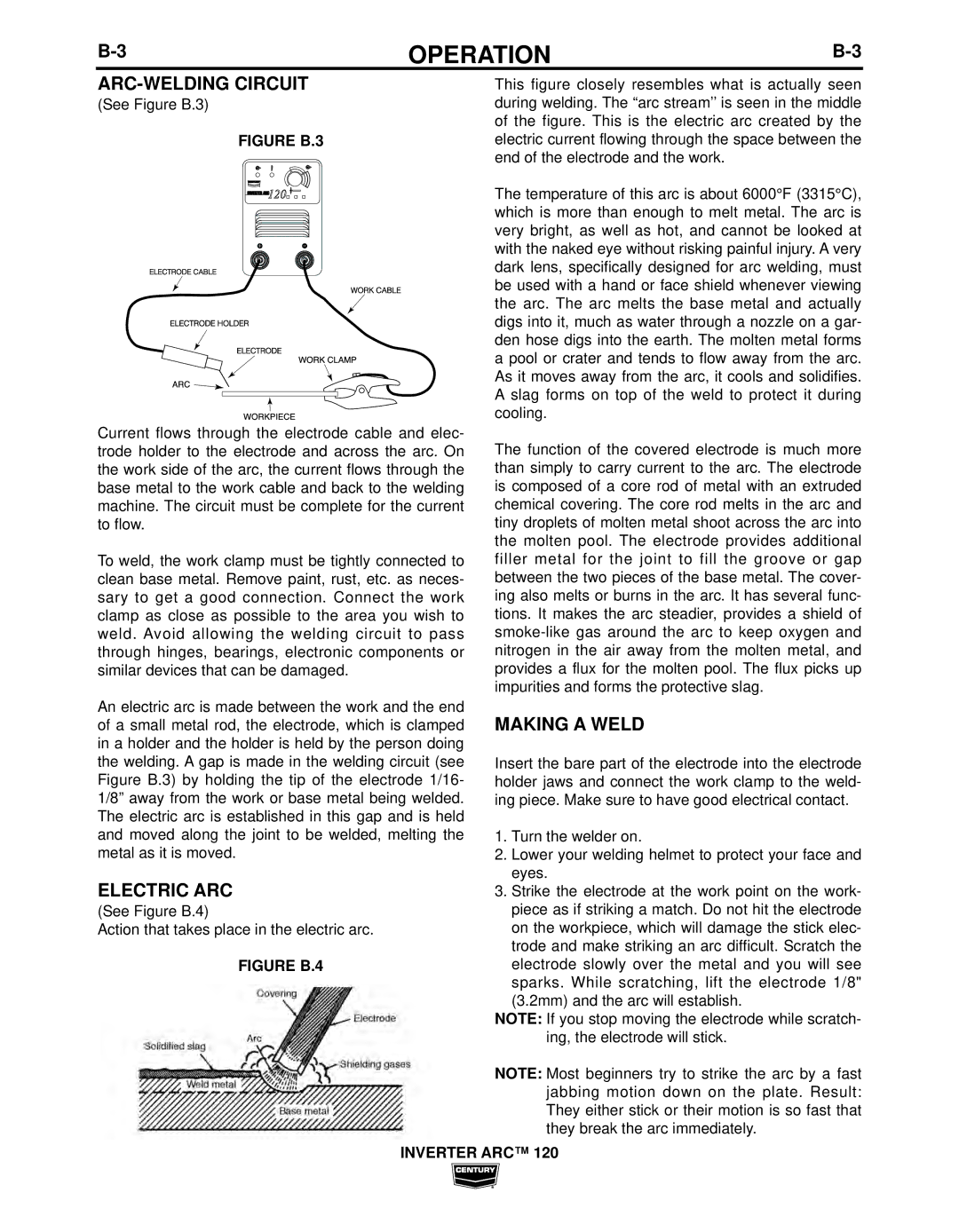
OPERATION | ||
|
|
|
ARC-WELDING CIRCUIT
(See Figure B.3)
FIGURE B.3
Current flows through the electrode cable and elec- trode holder to the electrode and across the arc. On the work side of the arc, the current flows through the base metal to the work cable and back to the welding machine. The circuit must be complete for the current to flow.
To weld, the work clamp must be tightly connected to clean base metal. Remove paint, rust, etc. as neces- sary to get a good connection. Connect the work clamp as close as possible to the area you wish to weld. Avoid allowing the welding circuit to pass through hinges, bearings, electronic components or similar devices that can be damaged.
An electric arc is made between the work and the end of a small metal rod, the electrode, which is clamped in a holder and the holder is held by the person doing the welding. A gap is made in the welding circuit (see Figure B.3) by holding the tip of the electrode 1/16- 1/8” away from the work or base metal being welded. The electric arc is established in this gap and is held and moved along the joint to be welded, melting the metal as it is moved.
ELECTRIC ARC
(See Figure B.4)
Action that takes place in the electric arc.
FIGURE B.4
This figure closely resembles what is actually seen during welding. The “arc stream’’ is seen in the middle of the figure. This is the electric arc created by the electric current flowing through the space between the end of the electrode and the work.
The temperature of this arc is about 6000°F (3315°C), which is more than enough to melt metal. The arc is very bright, as well as hot, and cannot be looked at with the naked eye without risking painful injury. A very dark lens, specifically designed for arc welding, must be used with a hand or face shield whenever viewing the arc. The arc melts the base metal and actually digs into it, much as water through a nozzle on a gar- den hose digs into the earth. The molten metal forms a pool or crater and tends to flow away from the arc. As it moves away from the arc, it cools and solidifies. A slag forms on top of the weld to protect it during cooling.
The function of the covered electrode is much more than simply to carry current to the arc. The electrode is composed of a core rod of metal with an extruded chemical covering. The core rod melts in the arc and tiny droplets of molten metal shoot across the arc into the molten pool. The electrode provides additional filler metal for the joint to fill the groove or gap between the two pieces of the base metal. The cover- ing also melts or burns in the arc. It has several func- tions. It makes the arc steadier, provides a shield of
MAKING A WELD
Insert the bare part of the electrode into the electrode holder jaws and connect the work clamp to the weld- ing piece. Make sure to have good electrical contact.
1.Turn the welder on.
2.Lower your welding helmet to protect your face and eyes.
3.Strike the electrode at the work point on the work- piece as if striking a match. Do not hit the electrode on the workpiece, which will damage the stick elec- trode and make striking an arc difficult. Scratch the electrode slowly over the metal and you will see sparks. While scratching, lift the electrode 1/8"
(3.2mm) and the arc will establish.
NOTE: If you stop moving the electrode while scratch- ing, the electrode will stick.
NOTE: Most beginners try to strike the arc by a fast jabbing motion down on the plate. Result: They either stick or their motion is so fast that they break the arc immediately.
